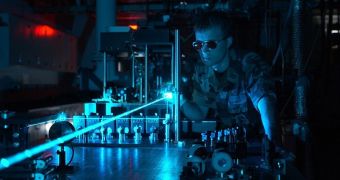A group of investigators from the Duke University in Durham, North Carolina, led by chemist Warren S. Warren, announce the development of a new laser-based method of investigating the drawings beneath the surface of old paintings. Until now, doing so required experts to temper with the actual work of art.
With the new approach, scientists can conduct 3D analyses of what lies under the surface layers of a painting, in exquisite detail. This capability was made possible through the adaptation of an existing optical microscopy technique, generally used in medicine to study tissue cross-sections.
By applying it to paintings, researchers can now determine the inner structure of all paint layers famous artists have used to create their masterpieces. Additionally, the technique can also reveal the type and amounts of pigments used, as well as their locations within each of the paint layers.
The medical imaging technique works based on an advanced type of spectroscopy, where pulses of laser light lasting less than 1 picosecond (one trillionth of a second) are aimed at the paintings, causing some of the electrons orbiting atoms in the target sample to temporarily shift into higher energy states.
As soon as this happens, an additional series of pulses is used to measure how electrons in the sample return to their regular energy states. This process, called relaxation, occurs in specific patterns for different chemicals, providing a signature of the compounds present at the targeted location.
“This method has been in use in chemical-physics laboratories for half a century, but usually required high-power lasers that would be unacceptable for studying art,” Warren explains. His group worked closely with senior imaging scientist John Delaney, at the National Gallery of Art in Washington DC, and chief conservator William Brown, from the North Carolina Museum of Art (NCMA), in Raleigh.
“The current practice [for studying the chemical composition of paintings] is to take as few samples as you can get away with. The ability to take multiple non-destructive ‘samples’ anywhere on the painting is a tremendous advantage,” Brown adds, quoted by Nature News.
The team believes that this technique could be improved so that it becomes able to differentiate between different brush stroke thicknesses. In turn, these data could be used to separate the contributions of master painters from those of their apprentices.
“The preliminary results suggest it is a technique with great potential. It will be interesting to see how generally applicable it proves, once a wider range of paintings have been tested,” says Marika Spring, who is an art-conservation scientist at the National Gallery in London.

 14 DAY TRIAL //
14 DAY TRIAL //